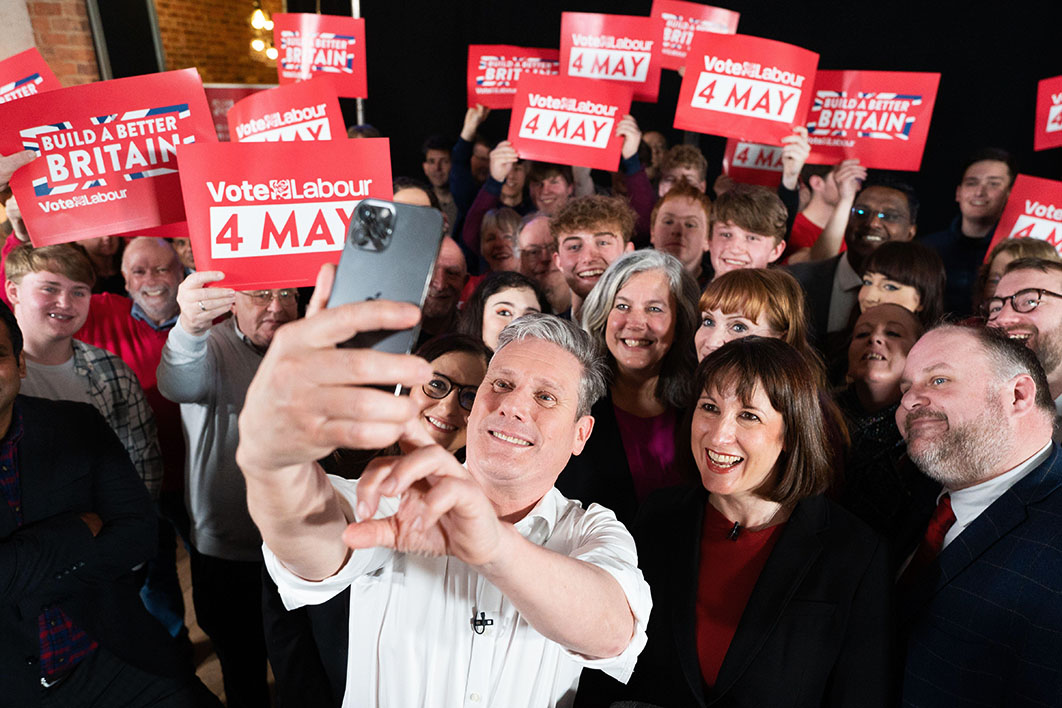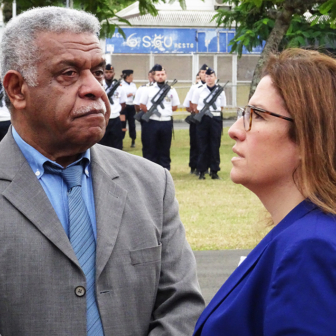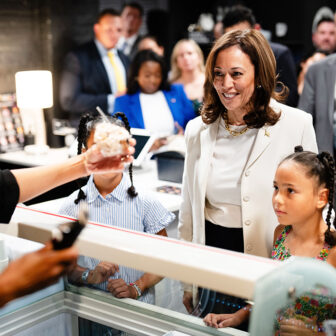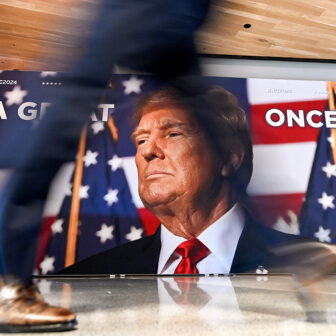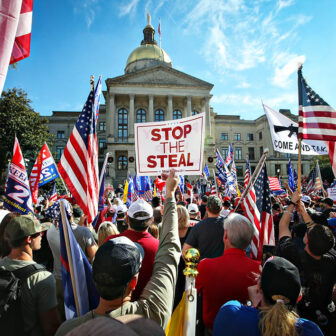Britain witnesses a political ritual every May that shines a fierce light on the fortunes of the main political parties. Twice in the 1980s Margaret Thatcher decided to call an early general election on the basis of the scene it illuminated, and the next few weeks will be studied with equal care by Britain’s current prime minister. But Rishi Sunak won’t be watching because he is likely to call an election. He will be hoping this year’s ritual solves a conundrum set by Britain’s crowded opinion-polling industry, in which fourteen companies jostle for attention.
The conundrum? They flatly disagree on whether the country will have a Labour government with a clear majority within the next two years, or whether it could be heading for a closely fought contest — or even a fifth consecutive Conservative victory for the first time in British history.
The May ritual I’m referring to is the annual round of local government elections. Not every British voter will be able to take part — there are no local elections this year in Scotland, Wales or London — but most will have a chance to decide who runs 230 cities, towns and local districts across much of England. On Friday 5 May, while much of the country prepares for King Charles to be crowned the following day in Westminster Abbey, party strategists and media pundits will be paying less attention to the coronation than to the local elections’ impact on another historic building, just across the road from the Abbey, the Houses of Parliament.
In a way, this is all rather odd. Voters will be choosing who should run their local services — schools, public housing, parks, social care, libraries, refuse collection and so on. The 8000 councillors they elect will have no say on income tax, immigration, energy prices, Brexit, help for Ukraine or any of the other great national issues that decide the fates of governments. And yet decades of experience show that most people consider not the qualities of the particular candidates standing in their neighbourhoods but the rival merits of the national parties they represent.
Not everyone: thankfully for the cause of democracy, outstanding local candidates can defy national trends. And some parties — notably the Liberal Democrats — win more votes in local than national elections. But, overall, when all the votes around the country are added up, the national picture is what matters.
Older readers may recall the Falklands war in 1982. Before the war, Thatcher’s government was deeply unpopular. Unemployment had trebled in three years from one to three million; the polls said the Conservatives were doomed to lose the following election. Yet Thatcher’s party triumphed in that May’s local elections because British troops were heading to the South Atlantic and most of Britain’s voters backed Thatcher’s quest to reclaim the islands from Argentina. Not a single local council in Britain had anything to do with any of this. Yet it was national sentiment, not local judgements, that decided which party should run each town and city.
Given all that, we shouldn’t be surprised that the national picture will be what really matters when this year’s local votes are counted. What gives the results added significance this time, though, are the disputes among pollsters. They agree that Keir Starmer’s opposition Labour Party is ahead but they disagree by how much. Some give Labour a lead of around 25 per cent, others nearer 15 per cent.
To be sure, both are big leads. (They might sound very big to Australian readers, but remember: Britain uses a first-past-the-post system and Labour’s votes are geographically concentrated, so the national vote translates into seats quite differently.) Repeated in a general election, Labour would be back in power. But there are two reasons why a big Labour victory is by no means certain.
First, governments over the past six decades or more have consistently lost support in the middle of each parliament, only to recover, at least to some extent, as the next general election approaches.
Second, changes in the relationship between votes and seats mean that Labour needs a bigger lead than in the past if it is to win outright. In 2005 — the last time Britain elected a Labour government — the party secured a comfortable majority with a lead in the popular vote of just 3 per cent (Labour 36 per cent, Conservatives 33 per cent). Today, a 3 per cent lead would leave Labour well short of a parliamentary majority; it might not even be the largest party in the House of Commons. Depending on a variety of factors, Labour will need a lead of at least 8 per cent, and might need a lead of as much as 13 per cent, to win outright. That was the margin by which Tony Blair led Labour to a landslide 179-seat majority in 1997. A repeat of those nationwide figures would mean a far closer outcome in terms of seats, and possibly a wafer-thin majority that could make it hard for Labour to remain in office for a full five-year term.
Given all that, a 15 per cent lead today would mean that even a modest Conservative recovery could jeopardise Labour’s chances of a clear victory. On the other hand, if Labour really is 25 per cent ahead, then it has a cushion against a Conservative recovery.
(A note for nerds: a narrow Labour lead in national votes at the next election is unlikely to mean the Conservatives stay in office. A more likely outcome is a hung parliament, in which neither Labour nor Conservative commands an overall majority. In those circumstances a minority Labour government is more likely than a minority Conservative government, because the great majority of smaller-party MPs, mainly Liberal Democrats and Scottish National Party MPs, are viscerally anti-Conservative. But a minority Labour government would be limited in what it could do, and would probably hold another general election within a year or two. Britain’s longer-term future would effectively be on hold.)
Given all that, what will the pundits and parties be looking for on 5 May? Above all, they will want to see the BBC’s estimates of how the local vote maps nationally, taking account of the fact that parts of Britain won’t be voting at all. Assuming the Liberal Democrats repeat their usual trick of doing better in local than national elections, and Labour worse, a good rule of thumb is to add eight to ten percentage points to Labour’s lead.
So, if the national vote share in the local elections shows Labour fifteen or more points ahead of the Conservatives, this suggests a “true” Labour lead of around 25 per cent. Pollsters showing the bigger Labour leads will be vindicated and the Conservatives will have reason to be dejected. But if Labour’s lead is below 10 per cent then its “true” lead would be in line with polls reporting smaller leads just now. And any significant Conservative recovery would jeopardise Labour’s hopes of outright victory at the next general election.
Doubtless the television cameras will show us the expressions on the faces of Rishi Sunak and Keir Starmer as they enter Westminster Abbey for the coronation the following day. They will do their professional best to look positive; but experts in facial expressions might be able to detect their true feelings as they absorb the news of the local election results. •
